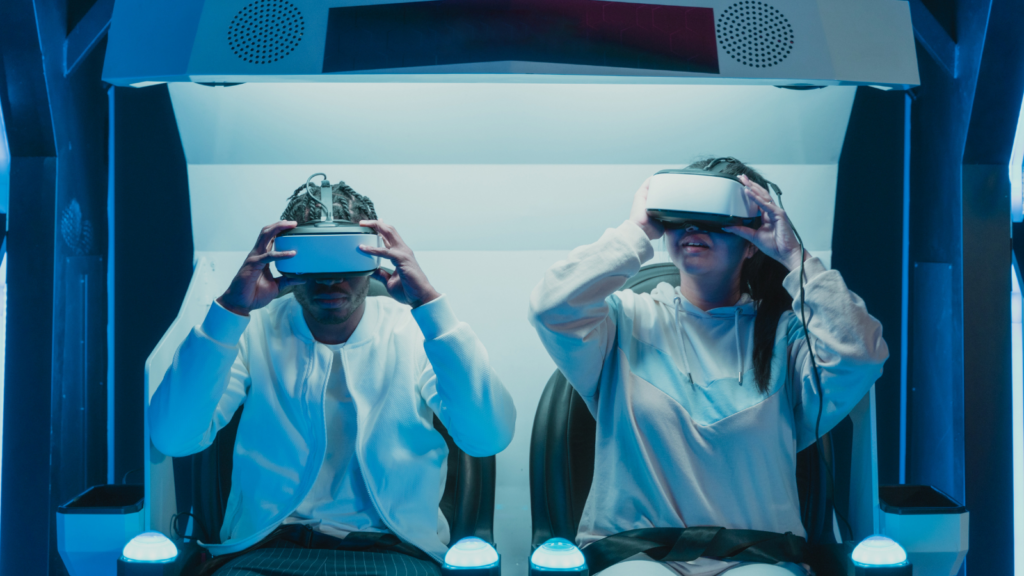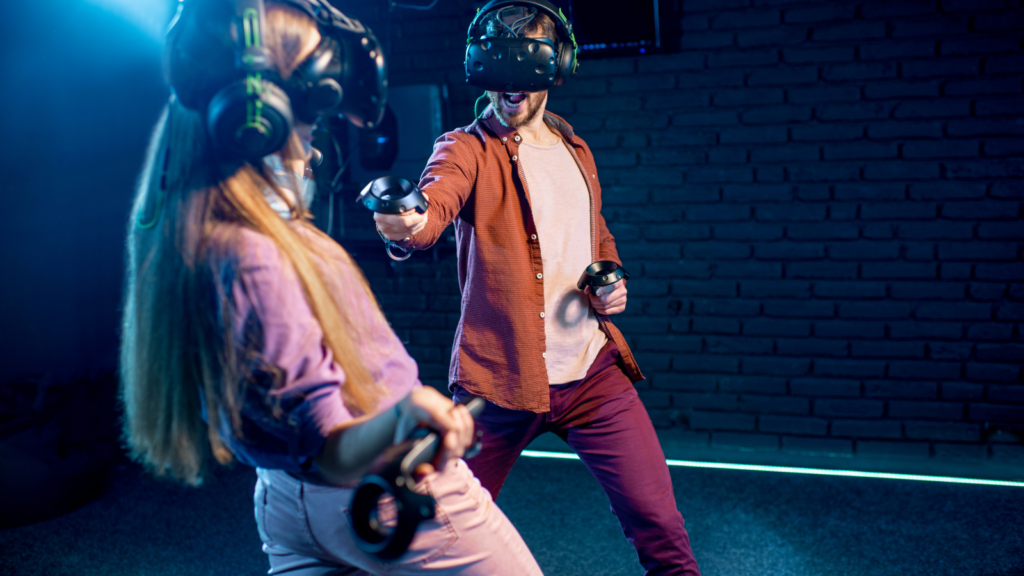The digital landscape is shifting, and at the forefront of this change is virtual reality (VR). This immersive technology is transforming the way we play, entertain, and simulate reality. From the adrenaline-filled world of gaming to the captivating realm of entertainment, and the precise domain of simulations, VR is reshaping our experiences and expectations.
But what’s the real impact of virtual reality in gaming, entertainment, and simulation ? How is it redefining the boundaries of our digital interactions? In this article, we’ll dive deep into the world of VR, exploring its influence on gaming, entertainment, and simulation. We’ll uncover the exciting opportunities it presents, the challenges it poses, and the future it envisions. So, strap on your VR headset and prepare for an exhilarating journey into the virtual frontier.
Virtual Reality in Gaming, Entertainment, and Simulation
Impact on Game Design and Player Experience

Virtual reality imposed significant changes in game design and player experience, anchoring it towards creating more immersive and interactive environments. Traditional gaming presented a restricted third-person perspective, while VR thrusts players into a first-person viewpoint that amplifies the sense of ‘being there.’
To illustrate, in a typical racing game, players control the car from a bird’s-eye view or the driver’s seat. In contrast, VR driving experiences, such as Project Cars 2, enable players to virtually sit in the driver’s seat, feeling every turn, acceleration, and skid as if they are actually on the race track.
Virtual Reality in Entertainment Beyond Gaming.
VR in Movies and Live Events
Virtual reality has blazed a trail in film industries and live events, providing unprecedented audio-visual experiences. Movie enthusiasts can now witness 3D movies with VR, augmenting their experience beyond mere 2D consumption. For instance, within the realm of Hollywood, VR has induced an immersive spin on storytelling. Directors maximize VR’s potential by providing a 360-degree view, making movies more engaging and interactive.
Moreover, VR displays its disruptive potential in live events. The immersiveness of VR technology enables audiences to experience concerts, sports events, or theater from the comfort of their homes, matching an in-person experience. Noteworthy instances include the 2018 World Cup or Coachella Music Festival, both employing VR to enhance viewers’ enjoyment, sans physical presence.
How Does VR Change Audience Engagement?

The advent of virtual reality has dramatically altered audience engagement, transforming them from mere spectators to participants. VR’s immersive environment leads the audience through a sensory journey, enabling direct interaction with the virtual world.
Take, for instance, an interactive VR documentary. The audience doesn’t just watch but participate in the narrative, experiencing the plot firsthand. Such immersive storytelling compels deeper emotional responses, enhancing engagement, and forging stronger connections with the content.
Utilizing VR for Simulation and Training
Professional Skills Training with VR
Practical application of VR in professional skills training demonstrates its broad potential. Industries from automotive to aerospace harness VR’s capability. For instance, Ford Motor Company employs VR in designing cars while NASA employs VR during spacewalk training. In both scenarios, VR permits trial and error in a risk-free environment. It’s not just beneficial for learners but cost-effective for organizations.
Furthermore, VR isn’t limited to high-tech industries. It’s becoming frequent in more traditional trades too. Caterpillar, for instance, deploys VR in training operators on heavy machinery. It ensures a safe training module for complex machinery, minimizing potential risks while maintaining the integrity of training.
Medical and Safety Simulations

In the realm of medical and safety simulations, VR shows immense potential. It’s a tool that can save lives. For instance, it is employed in operating room (OR) simulations allowing physicians to rehearse procedures before making incisions. It’s especially prevalent in high-risk specializations like neurosurgery and cardiology. Medical professionals can virtually step inside a patient’s anatomy, plan their procedures, and even practice them.
Moreover, various safety simulations involving VR reduces risks in dangerous professions. An instance of its application is the fire department training simulations. Firefighters can enter a virtual burning building, experiencing the heat and chaos without real danger.
VR is Reshaping our Experiences and Expectations
Virtual reality in gaming, entertainment, and simulation is undeniable, with its immersive experiences captivating audiences worldwide. It’s also making inroads in professional training and simulations, offering cost-effective, risk-free learning in diverse industries. While challenges persist in graphics quality, latency, user comfort, and accessibility, strides are being made to mitigate these issues.

